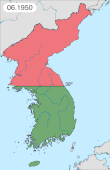Robert L. Dale
USNR, from 1946 to 1949 Dale was assigned as a flight Instructor to Cory Field in Pensacola, Florida where he trained pilots formation flying and aerobatics such as loops, rolls, spins, precision maneuvers, takeoffs, landings, and instrument control reading.
[12] While in the U.S. Navy (1959), Dale received his bachelor's degree from George Washington University graduating cum laude, majoring in geology.
[1][13] Géza Teleki, a Geology professor at the university[14] and Dale's mentor, encouraged him to take part in the U.S. Antarctic Research Program (USARP).
[13] As Lieutenant Commander, USN, and part of Antarctic Operation Deep Freeze (1959–1960), Dale was Officer In-Charge of the wintering-over Air Development Squadron Six (VX-6) Detachment Alpha at McMurdo Station.
[15] He was part of a team that flew scientist to remote, unexplored, mountain ranges and ice sheets to collect samples, run experiments and compile scientific data.
Dale and his squadron photo mapped hundreds of thousands of square miles of Antarctica; and developed new, improved techniques in polar navigation.
[20] After retiring from the Navy in 1966 (CDR, USN), Dale continued his Antarctic explorations as a representative of the National Science Foundation (NSF) from 1967 until 1975.
[22][23] This would-be the first comprehensive oceanographic survey of the Weddell Sea, supporting Norwegian scientists placing an array of underwater current meters on the continental slope to measure the flow of Antarctic bottom water.
[1] Igor Alekseevich Zotikov (Russian: Зотиков, Игорь Алексеевич) and Dale met at Deep Freeze V in 1965 and became lifelong friends.
Zotikov was a Soviet glaciologist, who in 1960, with the materials from the results of the International Geophysical Year (IGY), wrote his thesis predicting freshwater lakes under the thickness of the Antarctic ice.
Finding a forested island in Hockomock Bay Woolwich, he built by hand, a self sustaining solar powered log home.





Chinese and
Soviet forces
• South Korean, U.S.,
Commonwealth
and United Nations
forces